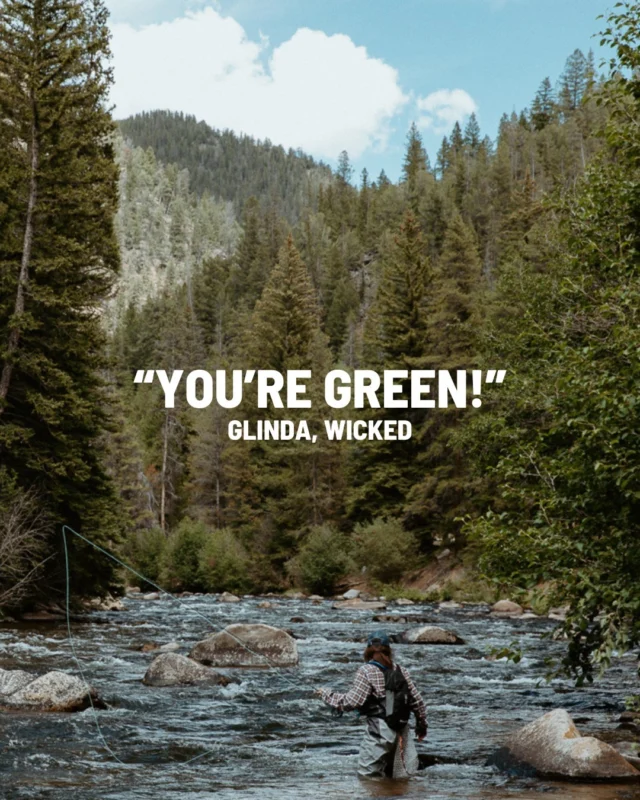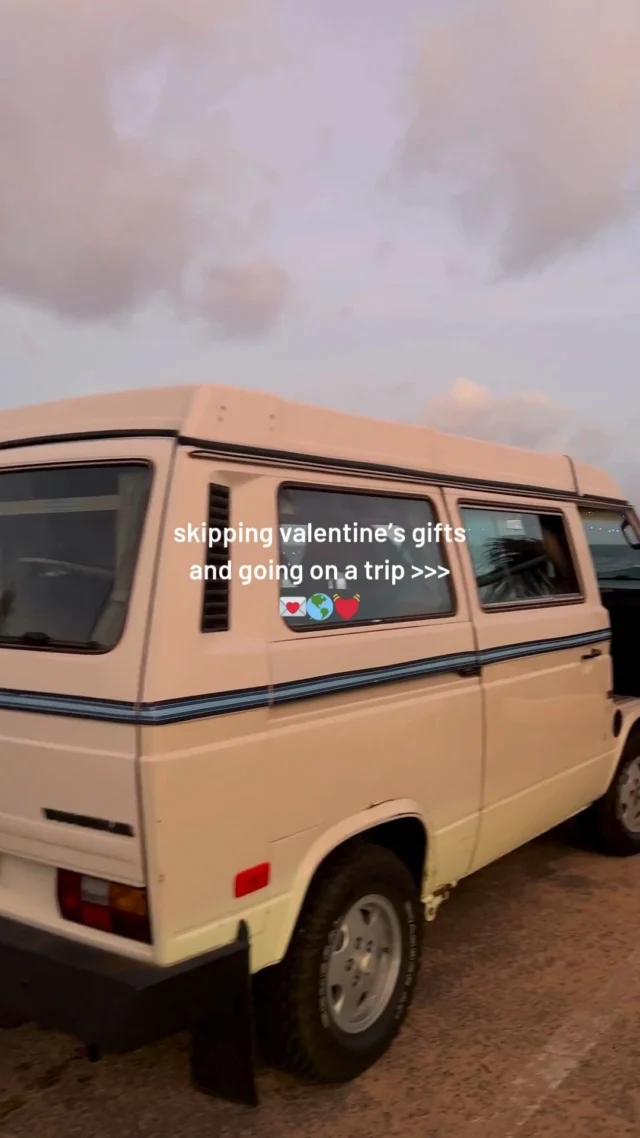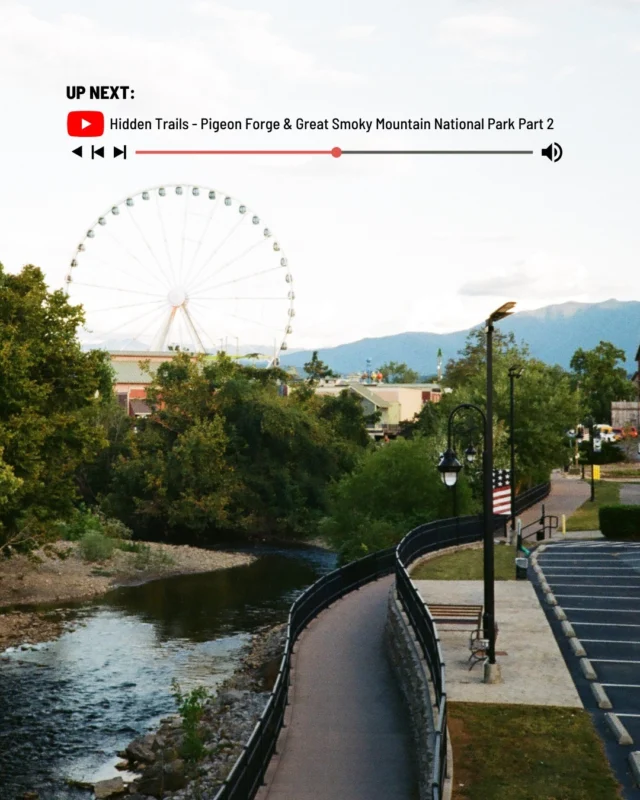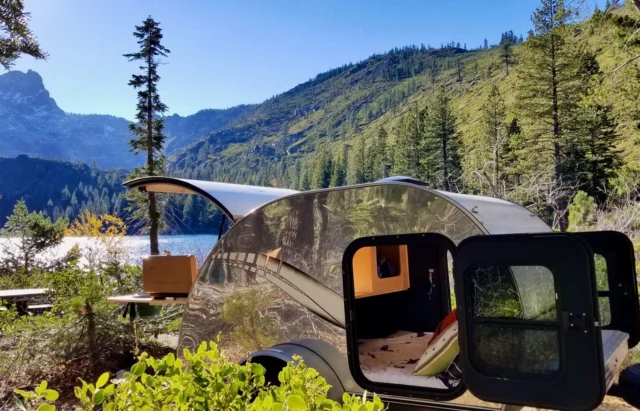
Viewing the northern lights in Alaska is an extraordinary experience you’ll remember for a lifetime. It’s no wonder viewing the Alaska aurora borealis tops a lot of people’s bucket lists. Traveling by RV is a fantastic way to experience Alaska’s remote beauty while chasing the lights.
We’ll take a look at the best locations to see northern lights in Alaska and share when you should go during the year. We’ll also share RV travel tips for a smooth trip to see the lights.
Table of contents
Best Time to See the Northern Lights in Alaska
The best time to view northern lights in Alaska is from mid-September to mid-April. Those are the darkest months in Alaska, which means you’ll have more time during which the lights might be visible in the night sky. The entire aurora season runs from August 21 through April 21 in Alaska.
The best time to watch for lights is between 10 pm and 3 am each day. You’ll want to make sure the nights you try to view lights are clear and cold. Make sure there isn’t any cloud cover and skies are clear so you can see the lights without any obstructions.
Usually, less crowded areas offer better opportunities for seeing the lights because there isn’t as much light pollution.
Top Locations to View the Northern Lights
There are lots of great spots in Alaska where you can view the northern lights. Here are a few places where people often have luck seeing the lights.
1. Fairbanks
Fairbanks is often touted as one of the best places to see northern lights in Alaska. It has an airport and is easily accessible via the Parks Highway, so people can travel to the city without too much trouble. Fairbanks is also under the “Aurora Oval.” This is an oval-shaped area that covers the top of the globe and indicates the place where the aurora borealis are most active. You can often see the aurora borealis right in downtown Fairbanks. The city also has a fairly low amount of precipitation and light pollution, which makes viewing the lights even better. Fairbanks is also home to the University of Alaska Fairbanks Geophysical Institute, and the institute issues northern lights forecasts you can check to try and figure out the best time to watch for lights.
Within the city, try some of the following spots to set up and watch for lights:
- Creamer’s Field Migratory Waterfowl Refuge – just outside Fairbanks and easy to reach
- Cleary Summit – 20 miles from Fairbanks with multiple pull-outs. The summit is accessible but there are sharp turns and inclines. In snowy conditions, an all-wheel or 4-wheel drive vehicle is recommended.
- Murphy Dome – 25 miles from Fairbanks with accessible, high views. There are sharp turns and inclines and in snowy conditions an all-wheel or 4-wheel drive vehicle is recommended.
RV campgrounds: There are lots of campgrounds in the Fairbanks area. Most operate seasonally from mid-May through September. However, the Chena River Recreation Area does have year-round camping available.
- Chena River Recreation Area: year-round camping at 3 campgrounds, no hookups
- Fairbanks/Chena River KOA Journey (formerly Riverview RV Park): seasonal camping from May – Sept, full hookups, dog park, showers, laundry, playground & outdoor game areas
2. Denali National Park
Denali National Park is a breathtaking national park that would be well worth visiting even without northern lights to view! But the park has very little light pollution, and according to the National Park Service just about anywhere in the park is a good spot for viewing. See if you can find an area with a clear view of the northern horizon with no buildings, trees, or mountains that might block your view. The northern lights are usually seen first towards the north, so begin by looking in that direction.
The Parks Highway into Denali does have RV access, but the highway is partially closed in winter.
RV campgrounds: Riley Creek Campground is open year-round. Camping is free except during the summer months. Savage River Campground and Teklanika River Campgrounds are open from mid-May through mid-September and allow RV camping. None of the campgrounds at Denali have hookups.
3. Chena Hot Springs
Chena Hot Springs is a relaxing hot springs resort that’s 60 miles from Fairbanks. Guests 18 and up can relax in the outdoor hot springs lake year-round. Younger children can swim in the resort’s indoor pool. Since Chena is so far north, and away from light pollution, it’s a great spot to view the aurora borealis.
The resort is off of Chena Hot Springs Road, which is a paved road. Conditions can be icy and snowy in winter, so you’ll want to be cautious driving in cold weather.
RV campgrounds: There are a few options for staying near Chena Hot Springs. Chena Hot Springs Resort has RV and tent camping available from May through September. These sites are first-come, first serve and cost $20 each. There are potable water and dump stations available in-season, but there are no hookups. The campground does have a laundry room.
There is also year-round camping available at the three campgrounds at Chena River Recreation Area. These campgrounds do not have hookups, but there are toilets.
4. Coldfoot (Gates of the Arctic National Park)
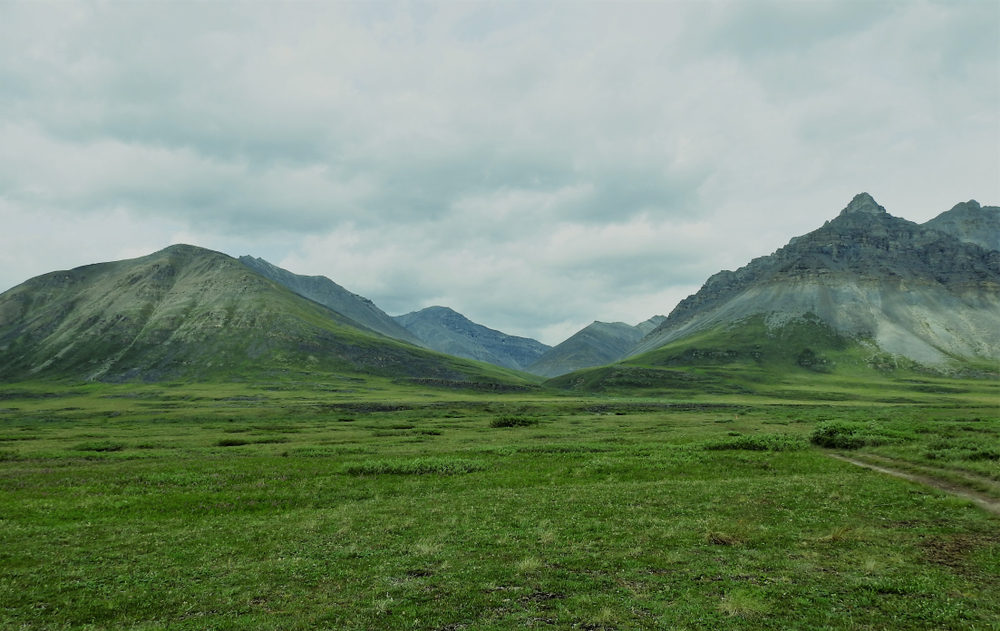
The ghost town of Coldfoot near Gates of the Arctic National Park is a former gold mining town. It’s now a stop on the Dalton Highway. The town has few amenities – the city center is home to just an airstrip, a post office, a trooper outpost, and a gas station with a small diner.
But Coldfoot is above the Arctic Circle and has no light pollution, making it a great place for serious northern lights hunters to explore.
You can travel to Coldfoot via bush plane from Fairbanks, or you can drive the Dalton Highway. In a car, the drive takes about 8 hours and 45 minutes. Traveling by RV will likely take longer. Both forms of transportation can also be affected by weather, especially during the peak northern lights viewing months.
RV campgrounds: Staying in Coldfoot puts you in a great spot to view the aurora borealis, and also puts you close to Gates of the Arctic if you want to explore the national park. Coldfoot Camp has free camping available during the summer. In colder months, there are basic cabins available where you can bunk. Iniakuk Lake Wilderness Lodge has rooms and cabins at Gates of the Arctic National Park.
5. Anchorage & Eagle River
Viewing northern lights in Anchorage may be slightly more of a challenge than some of the more far-flung Alaskan locations. Anchorage is the largest city in the state, with 40% of the state’s population. While the city isn’t huge, it does have more light pollution than other spots. However, Anchorage also has more amenities, including comfortable campgrounds and places to stay, restaurants, and gas stations.
Here are a few places in Anchorage and Eagle River where you may want to watch for lights:
- Glen Alps Trailhead: This is near Chugach State Park, and there is a scenic overlook just north of the trailhead parking lot with views of the Anchorage Bowl, Cook Inlet, and other Anchorage sights. You can hike from here up to Flattop Mountain, or watch for lights from the parking lot.
- Anchorage Downtown Viewpoint: This is a popular spot for photographers to get scenic shots of Anchorage against the Chugach Front, and at night the northern sky is viewable without much light pollution. The viewpoint is just off the aptly-named Northern Lights Boulevard, near Postmark Drive. Earthquake Park is about 0.6 miles from this parking lot.
- Point Woronzof: Point Woronzof faces northwest, and is on a bluff 120 feet above Knik Arm. You’ll get sweeping views of the northern sky, and it should be dark enough in season to see the aurora.
RV campgrounds: The Palmer/Anchorage North KOA is open year-round and is a great option. The campground has full hookups, laundry facilities, a pet area, a general store and more. Eagle River Campground is a seasonal campground that’s open from late May through late September. Camp sites have picnic tables, fire pits, water, and flush toilets. Golden Nugget RV Park in Anchorage is open year-round for longterm tenants. And Ship Creek RV Park is open each season from May 1 through September 30.
RV Travel Tips for Northern Lights Hunting
No one can guarantee that you’ll see northern lights when you go looking for them. However, there are some things you can do to increase your chances. There are also some tips to try to make sure your winter travel is safe and comfortable.
Choosing the Right RV for Winter Travel
If you’ll be camping while chasing the northern lights, you’ll want to make sure your RV is prepared for winter. You’ll want to make sure there’s heating for tanks, excellent insulation, and good heating systems.
Road Conditions & Driving Safety
If you’re staying in a bigger city like Anchorage or Fairbanks, you may be on mostly paved roads and highways. However, if you plan to drive to remote locations, you may find rougher roads. The Dalton Highway has sections that are paved and sections that are not. You may also find snow and ice, depending on the time of year you’re visiting, so you’ll want a vehicle that can handle tough road conditions. A smaller rig like a Class B campervan with 4-wheel drive might fit your plans best.
Make sure to carry snow chains and check road conditions frequently. You’ll also want to check the weather in general, to make sure there aren’t any storms moving in when you plan to be driving. Finally, keep an emergency kit in case you break down. Don’t forget to bring extra food and water as well!
Camping & Overnight Parking
Many Alaskan RV parks are only open seasonally, usually from May through the end of September. If you want to chase the aurora outside of those months, look for campgrounds that are open year-round. We listed a few of them above. You can also boondock in remote locations. If you’re on BLM land, you can camp in most places for up to two weeks before needing to move. If you’re on tribal land, you’ll need permission from tribal landowners before setting up camp.
Make sure your RV can handle boondocking. You’ll need enough power and water, and add in some extra in case harsh weather prevents you from moving exactly when you planned.
Essential Gear for Aurora Viewing
If you’re headed to Alaska to view the aurora, you’ll definitely want warm clothing! Keep in mind that you may be outside, waiting and watching for lights for a considerable amount of time. Be sure to bring a heavy jacket, hat, waterproof gloves, snowboots, wool socks, and warm shirts and pants. You may also want some hand and footwarmers to tuck in your pockets or boots. Extra blankets can be helpful if you’ll be sitting outdoors watching for lights. You’ll also want some comfortable camp chairs.
Photographers who want to take pictures of the lights will want a tripod, a camera with manual settings for capturing the lights, and a remote clicker or camera timer if they want to be in some pictures as well.
Finally, use a red-light headlamp to preserve night vision while you’re out looking for lights. A regular, bright headlamp can hurt people’s eyes when they’ve gotten used to the dark.
Check the Forecast
There are a few different forecasts available for northern lights viewing. We can start by narrowing down the best season for the aurora – mid-September through mid-April. Then, there are a few places that will offer forecasts for about 3 days ahead of time. These look at weather forecasts for the next few days so you know if there will be cloud cover. They check the moon to see if its light will interfere with the aurora. And they also look at the KP index, which measures geomagnetic activity and is used to predict how visible the lights are. The most accurate forecasts will be during the day of the night you want to see lights. You can even get some forecasts 30 to 60 minutes before the aurora are expected to be active.
Here are some places to look for northern lights forecasts:
- Fairbanks Aurora Borealis Tracker: Uses information from the Geophysical Institute at the University of Alaska Fairbanks, weather data from popular nearby viewing locations, and the amount of daylight hours to tell you your chances of seeing lights right now
- Geophysical Institute at the University of Alaska Fairbanks Aurora Tracker: Gives you the current KP index, plus notes on the intensity of activity, the moon phase, and where to view the lights.
- NOAA Space Weather Prediction Center: Shows the location and intensity of the aurora in the next 30-90 minutes, and where the Aurora Oval is.
- Aurora Alerts: An app that monitors real-time activity and sends alerts to let you know if the aurora borealis will be visible where you are that night.
- My Aurora Forecast: Another app that shows the current KP index, a list of the best places to see the aurora right now, a map showing how strong the lights are around the world, and notifications when auroral activity is expected to be high.
Take a Tour
The decision to take a tour or not simply depends on your preference. If you feel comfortable hopping in your vehicle and chasing the northern lights yourself, you may not need an official tour. But if you’d like the expertise of someone who spends countless hours researching the lights, figuring out where to go, and possibly bringing along perks like hot cocoa, chairs, or blankets to make you more comfortable, you may want to sign up with a tour. Some tours even have professional photographers along who can take photos or help you with your own camera settings.
You can check for tours near Fairbanks or Anchorage where companies offer plenty of packages.
Give Yourself Several Days (and Nights)
Since weather and the aurora are both unpredictable, you’ll want to allow several nights to try and view the lights. If you’re counting on seeing them on one particular night, and the sky is cloudy, you’ll miss your chance. Give yourself at least three nights to try and catch the lights, if possible.
Additional Activities to Enhance Your Trip
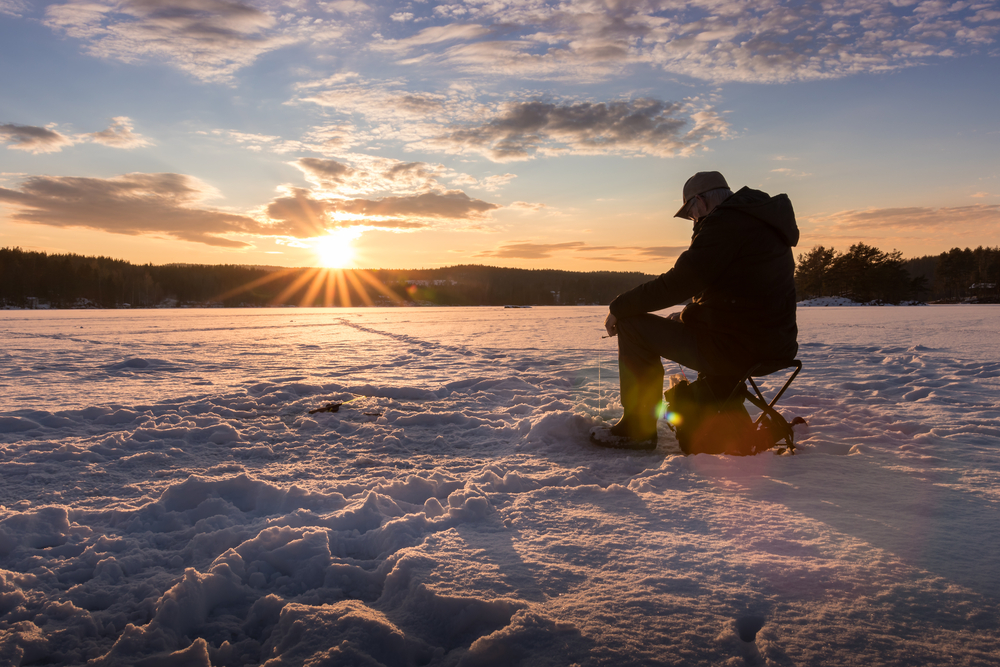
Since viewing the northern lights happens at night, you’ll still have time to fill during the day. There are lots of exciting activities you can plan in the meantime to explore the great state of Alaska. Here are a few to try:
- Dog sledding in Fairbanks: There are several dog sledding companies in Fairbanks, and you can book rides that start at 30 minutes long. You might even get to meet a star athlete – some dogs on these tours are former Iditarod or other race participants.
- Ice fishing and snowmobiling in Denali: You can go snowmobiling in some parts of Denali National Park. Snowmobiling is allowed each year after the park superintendent has determined there is adequate snow cover. Chelatna Lake and other lakes in the area also have ice fishing to try.
- Hot Springs Relaxation at Chena: Chena Hot Springs Resort is open year-round. Relax in the hot springs during the day, and watch for the aurora after the sun goes down.
- Wildlife Viewing in Arctic Alaska: According to the Alaska Department of Fish & Game, you can see polar bears, Arctic foxes, wolverines, caribou, whales, and many other wild animals in the very norther parts of Alaska. This wildlife viewing calendar shows you when you can watch for different animals, and what they might be up to. There are tour operators who provide guided wilderness tours to search for wildlife in northern Alaska, if you want to go with a pro.
Northern Lights in Alaska FAQs
Can you see the northern lights in Alaska in an RV?
Yes, you can see the northern lights in Alaska in an RV. There are campgrounds where you can stay while you chase the northern lights. Areas like the Chena River Recreation Area don’t have much light pollution, so you may not even have to stray too far from your rig to see the lights.
What are the best RV parks for northern lights viewing?
RV parks in Fairbanks, like the Fairbanks/Chena River KOA Journey, are good spots for northern lights viewing. Fairbanks doesn’t have as much light pollution as the larger city of Anchorage. Also, this RV park is situated close to places like Cleary Summit and Murphy Dome, which are great spots for viewing the aurora.
How cold does it get in Alaska for RV camping in winter?
Alaska winters can get very cold, and if you’re planning on RV camping, you’ll definitely need a rig that’s ready. In southern Alaska, temperatures are often in the 20s during the day and get colder after dark. But those temperatures can drop and get quite cold. In northern Alaskan places like Fairbanks, temperatures are often below zero and can plummet to 30 or 40° below zero.
Is it safe to drive an RV in Alaska in winter?
It is safe to drive an RV in some parts of Alaska in winter. Highways and roads in Anchorage and Fairbanks are well-traveled and plowed. But more remote highways are not maintained in winter. Be sure you have a route planned and know that it’s accessible in winter.
You’ll also want to watch the weather and avoid driving during snowstorms if possible. Carry chains for your vehicle or use studded tires in fall, winter, and spring. Keep your gas tank at least half full. Drive carefully and leave plenty of distance between you and the vehicle ahead. Watch for ice, especially black ice that can form on bridges and overpasses.
Finally, carry emergency supplies including extra warm clothing, a snow shovel, jumper cables, extra food and water, and blankets.
What is the best Alaska road trip for northern lights?
The best Alaska road trip to see northern lights would be a drive from Anchorage to Fairbanks. Spend some time in Anchorage, exploring the area and watching for lights at the places we profiled above. Then head to Fairbanksto check out the northern lights and the activities in the area. From Fairbanks, you could also take a day trip to Chena Hot Springs an hour away, or you could continue on to Coldfoot for more chances to view the aurora.
Heading to Alaska to view the northern lights is an unforgettable adventure! You can see the state’s majestic mountains, lakes, and other natural wonders. You’ll experience the amazing kaleidoscope of colors swirling across the sky. And you can try lots of winter adventures like ice fishing, dog sledding, and snowmobiling. Make sure to plan ahead for the best experience and book tours or make reservations when they’re needed. Also, be sure to check RVshare’s Alaska rentals to rent the perfect vehicle for your winter journey!

